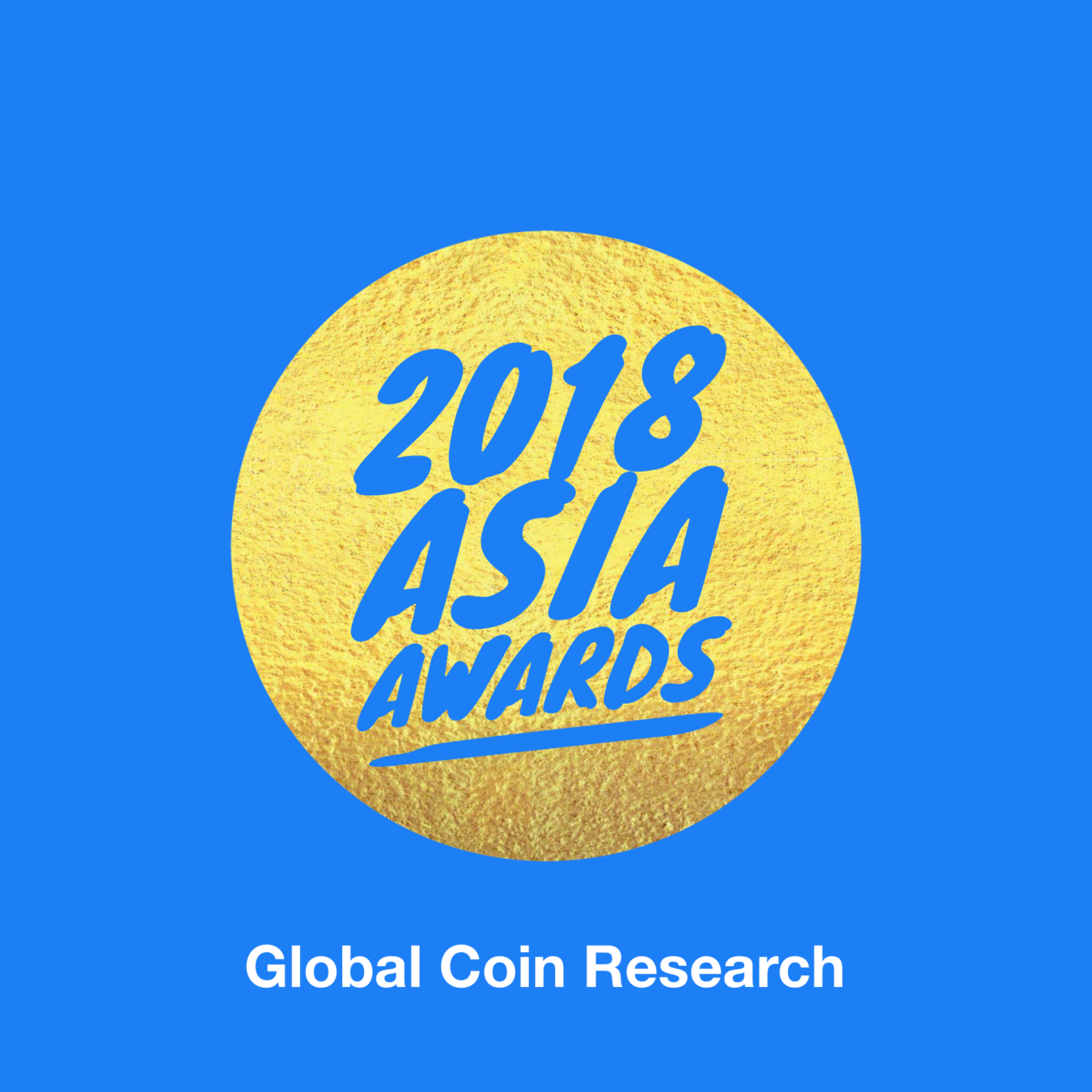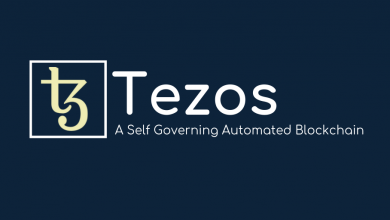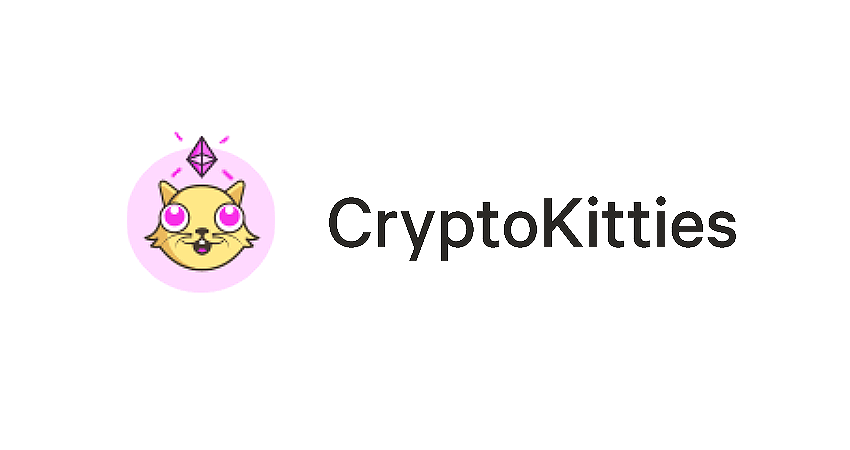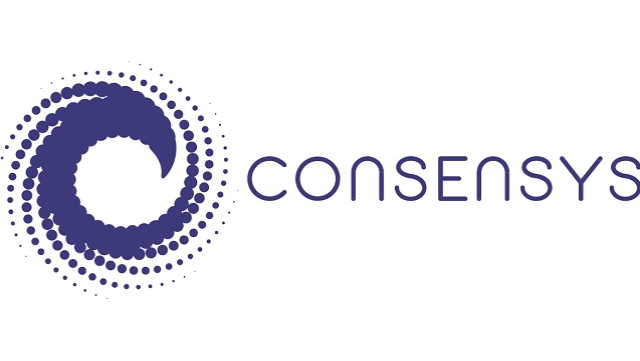The 2018 Asia Awards: 5 Global Projects with Strong Communities in Asia

This free preview of Global Coin Research is offered to our loyal readers as a representation of the unique information and
As we wrap up with the year, we wanted to look back in 2018 and give recognition to projects that have garnered amazing communities in Asia. Here are the 5 that we believe have been doing some phenomenal work in the region.
The 2018 Asia Awards: 5 Western Projects Successfully Making Way into Asia
Unlike most folks in the industry, we at GCR have been appreciating and enjoying this bear market. We have fewer conferences and less fundraising activities going on, and companies can finally learn how to be resourceful and bootstrap in preparation for this ongoing Crypto winter.
At this point in time, many projects are building and looking to fulfill their promises to ship something in the first half of 2019.
At GCR, we believe that for protocols and blockchain projects, building technology is great, but not enough. Blockchain technology and token design should be, and indeed continue to be, the priority, but we do not believe it should be the only thing that projects focus on.
With the promise of decentralized communities that many projects initially laid out in their visions, we believe that the founding team ought to spend at least 10% of their time thinking about their go-to-market strategy and community building, and where and who their initial adopters would be.
On a high level, we are seeing projects falling into 2 paths right now when approaching user adoption. In the 1st path, the project launches locally, wait for adoption to grow, and then launch into a number of regions around the world, similar to an Uber model. And for path 2, the project starts off by simultaneously building communities in various locations around the world, and launches the product and then engage its communities on adoption and participation.
Both paths have their pros and cons, and projects may find that one path may fit for them better than the other. We often encounter projects that have a technically strong team, have built a decentralized product, and want to build communities around the world. However, they don’t know how to go about building global communities or they don’t know where to start.
Another reason that often prevents these projects from pursuing path 2 is cost. Going abroad and spending time in foreign countries is more expensive on
In either case, for many of these companies looking for adoption, it has increasingly become apparent to them that their first launch market may not be the US, or anywhere near the Western Hemisphere.
GCR has a primary focus on Asia, and as a result, we have identified global projects who has great communities in Asia. Many projects who are based in the US or North America now do trips in Asia once or twice a year, and we certainly commend them for their effort. But given the massive amount of $ that many of these projects have raised, we don’t think that is enough to spur those communities.
At GCR, we evaluated projects that raised money from late 2017 and early 2018. There are a number of standout companies that have dedicated notable resources to their Asia communities and we’d like to recognize them as role models in the space that other projects can look to learn from their successes, and failures.
We applaud these companies as we believe they are doing some of the hardest work uplifting local communities, dedicating resources to educate folks on Blockchain technology, and actively participating and contributing to the regional ecosystems. Without further ado, here are the top 5 thoughtful projects with strong communities in Asia.

Tezos Foundation
In 2018, GCR is recognizing Tezos and its Foundation for their commitment to promoting Blockchain education to young people and in universities in Asia.
Tezos and its foundation have had its fair of media spotlight beginning of this year, but in the second half of the year, the foundation has been making way successfully into Asia through partnerships with universities and conducting meetups around Blockchain education. We look forward to more great things coming out from the team.
“The Tezos Foundation’s core mission is to support the long-term success of the Tezos protocol and ecosystem. By funding initiatives imagined by scientists, researchers, developers, entrepreneurs, and enthusiasts, the Foundation encourages decentralized development and robust participation.”
Since August, the Tezos foundation team has been hard at work in writing research grants, initiating a number of university events and educational meetups in Asia around blockchain and OCaml. They have started forming deeper relationships in a number of cities in Asia through local partnerships and Memorandum of Understanding (MoU) agreements.
Some academic areas of focuses have included training students on OCaml, the programming language that Tezos is written in; partnering on a programming book with a professor from National University of Singapore; speaking about technical challenges facing blockchain at National Taiwan University Department of Computer Science & Information Engineering; doing meetup in Japan discussing PoS algorithms; and launching a Masterclass at Nanyang Technological University in Singapore.
The project has also set up various meetups in Southeast Asia in cities such as Bangkok and Hanoi to talk about blockchain technology and Ocaml.
In the latest announcement, Tezos Korea signed a MoU with Yonsei University to collaboratively work on the development of blockchain talents. This MoU represents Tezo’s dedication in the blockchain education space, as they look to
Tezos has also tried to advance into China, and they have quickly found that perhaps China is not the best market for them right now. In China, the Tezos team partner Cryptium Labs documented their observation of the market through a post titled “Journey to the East — A Sneak Peak into the Chinese Blockchain Ecosystem and Learnings from our Tezos Meetups going into Hong Kong and mainland China”:
“We learned that the Chinese-speaking community was not yet as aware of blockchain from the technological perspective, the attention still being on investment and its financial applications. There was a general lack of understanding of Proof-of-Stake, and from the four variants we presented during our meetups, EOS with
was by far the most known project. […]we decided to reshape our community development strategy and focus on writing technical content, providing workshops and lectures oriented to developers and researchers. “ DPoS
We applaud these various efforts led by the foundation and the Tezos team to experiment and engage in dialogues with different communities.
Despite being a late entrant into Asia, we see the foundation being thoughtful and pushing into the areas and demographics often neglected by the rest of the crypto community- education and young people. We believe their work will pay off in the long run.

CryptoKitties
In 2018, GCR recognizes Cryptokitties as one of the most hardworking Crypto teams making inroads into Asia.
The team at Cryptokitties has been cognizant of the importance of the Asia market since very early on in late 2017. The effort, spearheaded by Benny Giang, has been making ways into a number of Asian countries including China, Japan
As money and talent flows into the crypto and blockchain worlds, a persistent question keeps coming up: what is going to be the “killer app” that drives adoption for these nascent technologies? The answer may well be quite simple: gaming in Asia.
Indeed, Cryptokitties recognizes the large market of gamer and crypto enthusiasts there, and it is building on the playbook pioneered by Uber when it launched in China in 2014. Since inception, Cryptokitties’ largest user markets have been, and still are, the U.S. and China.
Benny Giang, one of the co-founders of Cryptokitties, has been tasked with Cryptokitties Asia expansion since late 2017. Since then, the team has launched Cryptokitties in China, Hong Kong, and Taiwan, Korea and Japan.
Benny believes blockchain games in Asia are a huge untapped market but with increasing competition. Whereas the intersection of gaming and blockchain users is still pretty limited in the Americas, in Asia, that audience is significantly larger. This is primarily due to three reasons: 1) the awareness of cryptocurrency and blockchain is more prevalent in Asia, 2) the regulatory markets are more developed and sophisticated (for better or worse) in China, Korea, and Japan, and 3) there is a proportionally higher number of gamers in Asia than the U.S.
In January 2018, Axiom
In our discussion with him, Benny provided some insightful advice on
Secondly, tasteful and culturally-appealing design is also very important when it comes to
In 2019, we look to them to do more amazing work educating (and entertaining) the blockchain communities there.

ConsenSys
In 2018, GCR is recognizing ConsenSys for capturing some of the most influential alliances and enterprise mindshares in Asia.
For example, ConsenSys has been in China for a number of years, and this year in July, it was announced that China’s Xiongan Corporation has signed a Memorandum of Understanding (MoU) with ConsenSys to bring blockchain technology to the “smart city”.
The
Recently at the Rise conference in Hong Kong, Lubin had expressed his belief that the world was moving towards a system of “‘global villages’ where you can have decentralized governance.
Aside from China, Consensys has also partnered with South Korean technological holding SK Group. They have signed a Memorandum of Understanding (MoU) for blockchain business cooperation in early December.
SK Holdings C&C is the information technology solutions arm of the SK Group, one of
“The two companies will begin to explore business models for expanding their enterprise blockchain business through joint analysis of their respective blockchain platforms, technologies and services.”
The new partnership will also include Ethereum blockchain technology education for Korean developers through ConsenSys Academy and SK Holdings C&C’s Tech Training Center, scheduled to be completed by the end of the year.
There are a number of these high profile partnerships and MoUs, including one with Japan’s Shinsei Bank Hong Kong-based restricted license bank Nippon Wealth, Singaporean private equity fund

MakerDAO
In 2018, GCR is recognizing Maker for its fast growing community presence in China and various parts of Asia.
You won’t be able to find Maker and their Asia presence online much. That’s because they’ve localized their resources and materials so much that there aren’t much available in English.
The team at MakerDAO has built a deep presence in Asia and in fact, around the world. For one, they are one of the most active partners with ETHGobal, an Ethereum Hackathon that hosts hackathons once a month in a different city around the world.
MakerDAO China is another example of great localization work that the company has been doing. Under the lead Chao Pan, the team has built a large online presence (example here on Zhihu, a larger more widely used Quora of China) and organized and participated in a number of educational and panel series to educate the communities Maker. Chao Pan is cited in a number of Chinese local articles, but you don’t hear a blip about them in the Maker team’s English updates or pieces.
Currently, most Western crypto companies do not apply a local go-to-market strategy when trying to expand into other regions. Instead, most of them choose to leverage their “global communities”. They would incentivize these regional token holders to do local marketing and encourage them to find more token supporters and buyers in their region. Nonetheless, that type of marketing approach effectively identifies people who want to make a quick buck, rather than users who can sustain a platform.
Maker, on the other hand, sees the importance of local teams. They have been actively building out their teams around Asia. Currently, they are still hiring community leads in Japan and Korea.
As one of the few western stable coin projects making inroads into Asia, we expect to see more great work and educational materials from the Maker team in the Asia crypto ecosystem.

Ethereum
In 2018, GCR recognizes Ethereum for supporting and empowering blockchain communities in Asia by being the most collaborative with projects and local communities.
Ethereum has one of the largest crypto communities in the world. The team and the foundation have been actively working to uplift communities and introduce Blockchain technology in Asia, Africa, Europe, as well as the rest of the world.
Most people are probably aware that Ethereum has one of the largest crypto communities in the world. But one of the underappreciated things about them is how collaborative and supportive they are of other projects and the entire blockchain industry, and that includes those in Asia as well.
The Ethereum Foundation participates in many regional events in Asia, and the Ethereum Community Fund have local teams in China. ETHGlobal, a separate entity, also hosts a number of Ethereum hackathons around Asia. At every large-scale Asia crypto event, you can always see some Ethereum team members showing up or participating. As for the core team, which includes Vitalik Buterin, is constantly on the road and essentially lives on planes. They do not have a real headquarter or base, so much so that we almost didn’t want to label them as a “Western project” from the get-go.
As a comparison, there a number of large blockchain projects in the West that go to Asia with the goal to just meet partners and do business, but the Ethereum team strives to do more. Vitalik and the team have had conversations with government officials in a number of Asian countries- Thailand, Taiwan, and many more behind closed doors. And their intentions have been to bring awareness to the space, including educating folks on blockchain technology and the potential impact it has on societies.
At GCR, we believe the amount of work the Ethereum team has done and the amount of resources they put into educating, and bringing Blockchain awareness into the communities in Asia and around the world is something that many people have yet to come to fully appreciate. We believe their strong sense of community and collaborative approach will continue to be a compelling reason for folks to build on Ethereum, and an ongoing differentiator for the company.












